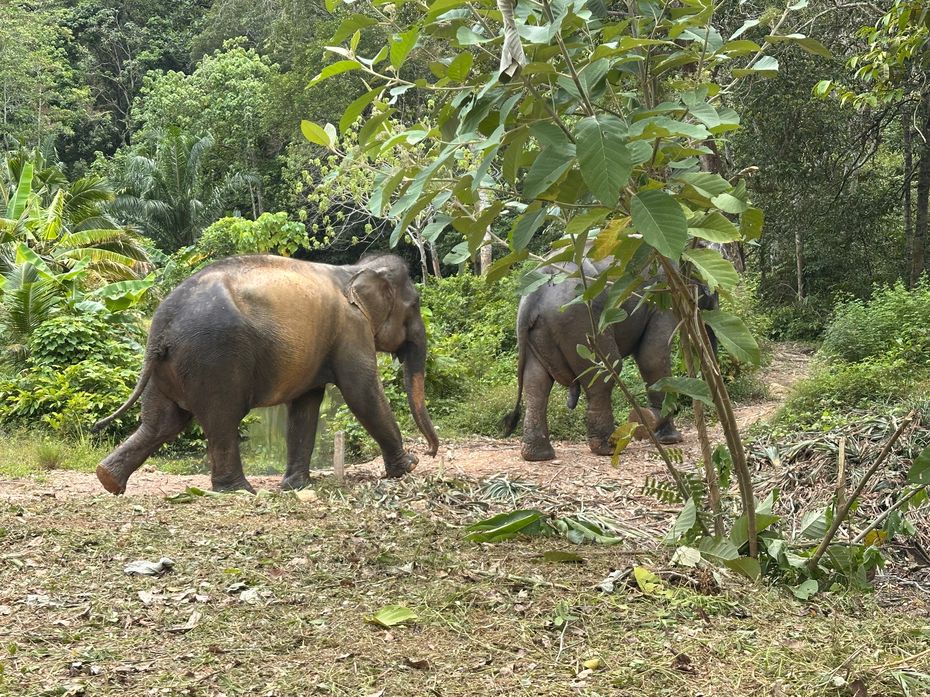A Visit to Following Giants
Visiting the elephant sanctuary, Following Giants, in Koh Lanta was an eye-opening experience. While it was heartening to see elephants removed from the harsh realities of tourism and logging, it also stirred a complex mix of emotions. This visit compelled me to reflect deeply on the broader implications of understanding animal tourism and the ethical dilemmas it presents.
The Complex Reality of Animal Sanctuaries
At Following Giants, I witnessed a sanctuary committed to providing elephants with a better life. However, the thought of elephants being chained at night and seeing mahouts carrying spears was unsettling. This experience highlighted the complicated nature of sanctuaries. While not ideal, these measures are often necessary for safety and control, ensuring the animals don’t wander into danger or harm each other.
The Challenges of Rewilding
Many people wonder why these majestic creatures can’t simply be returned to the wild. The answer is complex. Most rescued elephants have spent their lives in captivity, lacking the survival skills needed for the wild. Additionally, habitat loss and human-elephant conflicts pose significant risks, making rewilding not just challenging but sometimes impossible.

The Role of Ethical Sanctuaries
Despite their complications, ethical sanctuaries like Following Giants play a crucial role. They provide a refuge for animals who would otherwise face exploitation. These sanctuaries rely on tourism for funding, yet they strive to balance financial needs with the well-being of the animals. By implementing no-touch policies and focusing on education, they promote more humane interactions.
Tourists: Agents of Change
As tourists, we have the power to influence change. By choosing not to participate in attractions that exploit animals, we send a powerful message against cruelty. Supporting ethical sanctuaries and conservation efforts instead can lead to broader systemic changes in animal tourism.

The Impact of Animal Selfies and Rides
One of the most troubling aspects of animal tourism is the trend of selfies and rides with animals. Many educated individuals unknowingly perpetuate the cycle of exploitation by sharing these images. These photos not only support unethical practices but also contribute to the demand for animal entertainment. By avoiding and discouraging such activities, we can help shift the narrative towards more ethical tourism.
Reflecting on Chaining and Control
The use of chains and tools at sanctuaries is a contentious issue. It’s a reflection of the imperfect solutions currently available. While these practices may seem harsh, they serve as temporary measures until more humane alternatives, like larger enclosures, can be implemented. Constructive feedback and support from visitors can help sanctuaries evolve and improve.

Conclusion: A Call to Ethical Action
My visit to Following Giants was more than just an encounter with elephants; it was a call to action. It reinforced the importance of supporting ethical tourism and advocating for the rights of all animals. By having an understanding of animal tourism and choosing compassion over exploitation, we can create a world where animals are cherished, respected, and free from harm. Let us travel with empathy and make choices that reflect our commitment to a kinder, more ethical world.
Before you go…
If you’re vegan or just looking for cruelty-free supplements, chocolate, or meal kits, here are a few brands worth checking out.
Dr. Vegan make fully plant-based supplements with clear ingredients. Use code DR15 to get 15% off.
The links above are affiliate links. If you click through and buy something, I may earn a small commission at no extra cost to you.

